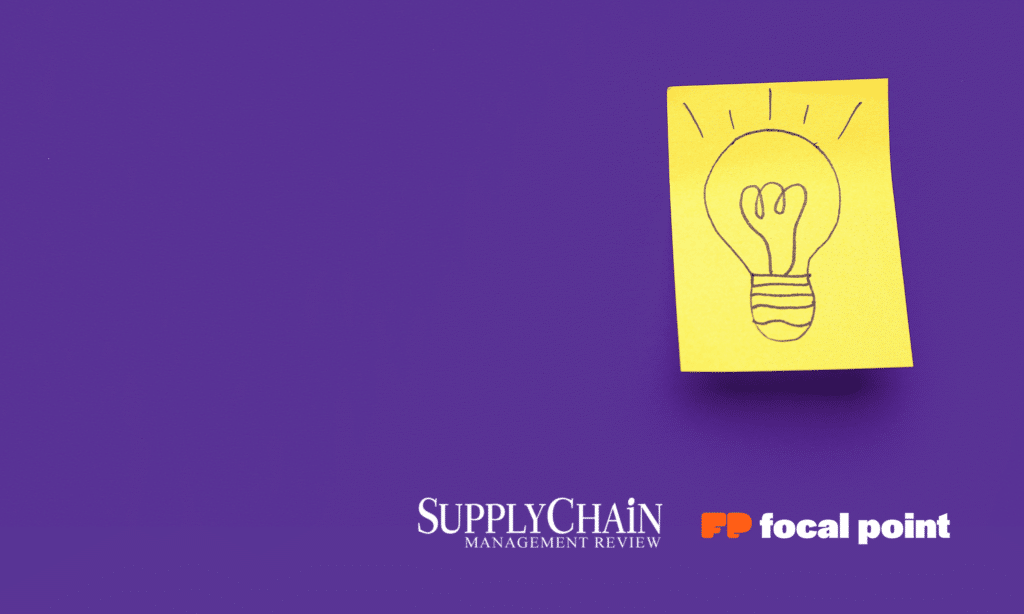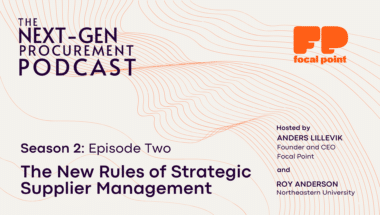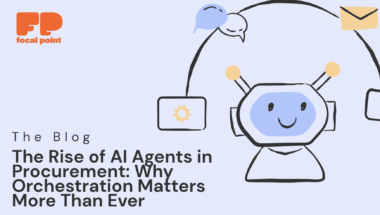This article was originally published in Supply Chain Management Review.
With modern procurement software, API-enabled data flows, and AI-guided processes, procurement teams can focus on what they do best: setting strategy and managing projects
Chief procurement and financial officers (CPOs/CFOs) have a wealth of data they can use to optimize processes. Today, the average enterprise collects data from 400 different sources, and data growth is surging at 63% a month.
As a result, it’s not surprising that data can easily become siloed across functions and systems. To bridge the gap, procurement teams often use Excel spreadsheets and email to collaborate with key stakeholders and gain approvals on critical decisions. With these decentralized processes, it’s harder to get a total picture of procurement health and opportunities for optimization. In addition, manual work can create errors that can quickly cascade. For example, an incorrect formula used to calculate the cost of working capital could lead to significant over- or under-spending.
From manual to modern procurement processes with AI-guided workflow
To gain greater data visibility, procurement teams can clean data, manually extract data from different solutions like Coupa and Zycus, build reports, and control processes. However, this process takes a long time, can’t be flexibly updated with new data sources and workflows, and may reinforce existing functional and process silos.
Another option is to deploy a platform that does all these processes automatically. Whereas gaining new capabilities historically required ripping and replacing one system for another, with modern technology, that’s no longer required. Instead, companies can deploy a SaaS procurement layer over existing systems. The SaaS platform collects, structures, validates, and analyzes procurement data, delivering insights directly to approved cross-functional users.
Beyond cost savings: How procurement drives a cycle of virtuous business benefits
Here’s how modern software is transforming procurement capabilities today:
- Structuring and surfacing data: Using APIs, SaaS procurement workflow solutions automatically collect, structure, and clean data, surfacing it to users to guide their decision-making.
- Creating an orchestration layer: SaaS procurement workflow tools help direct end-to-end processes across teams. This raises the value of underlying systems by giving users the holistic and granular visibility, automated processes, and visual analytics they need to drive more value from daily procurement decisions and accelerate progress toward achieving strategic objectives.
- Delivering centralized, customizable workflows: Instead of logging into multiple systems, procurement stakeholders can access a single system and create customized views. Users simply drag-and-drop functionality to fine-tune data and workflow for their roles.
- Executing processes right to left: Procurement projects are well-defined, requiring users to complete steps in a particular order. The software structures projects accordingly: streamlining communications across teams, providing digital nudges to users to complete their steps, and enabling owners to track task ownership and project progression.
- Identifying the right task owners: Procurement team members have different skill sets. With advanced procurement software, project owners can identify the right person to complete the right task at the right time. This helps owners maximize team productivity and effectiveness, manage projects successfully to completion, and meet key performance indicators (KPIs).
- Meeting ESG targets: Companies have aggressive environmental, social, and governance targets (ESG). Procurement teams can serve on the front lines of driving ESG improvements by selecting vendors who meet key guidelines, such as suppliers offering environmentally sustainable products and processes, or those who meet key diversity, equity, and inclusion guidelines, such as vendors that are women-owned, employ military veterans, or have a racially or ethnically diverse leadership team and workforce, in target geographies. They can also use software to track progress toward meeting carbon reduction goals, providing vital data for quarterly and annual reports.
- Improving risk management: With holistic to granular visibility into procurement projects, supplier health, and KPIs, procurement leaders and teams can reduce risks. They can use data to evaluate suppliers’ financial health, allocate spending to the right priorities, identify contract risks, and more.
- Preventing procurement fraud: The media frequently publishes cautionary stories of procurement leaders and users who committed extensive fraud – often for years. Procurement fraud costs companies an estimated 4-8% of their expenditures. In the UK, procurement fraud jumped 13% in 2023, while in the U.S., the U.S. Department of Justice recovered $337M from just one defense contractor in 2023 due to improper billing.
Dedicated procurement software can help identify signs of potential procurement fraud, such as a team member funneling excessive spending to one or a few suppliers, purchases of goods from companies with little online presence or at non-competitive prices and missing or altered documentation. The software provides data and analytics that reveal uncharacteristic spending and payment behavior, supplier performance issues, and more. In addition, processes are fully auditable, meaning leaders and auditors can quickly zero in on who has done what. Digital transparency, analytics, alerts, and auditability help prevent fraud, which flourishes in environments with poor controls.
Better together: How artificial and human intelligence guide procurement processes
With modern procurement software, API-enabled data flows, and AI-guided processes, procurement teams get to focus on what they do best: setting strategy, managing projects, and identifying spending optimization opportunities. Leaders gain the best thinking from their teams, while teams benefit from focusing on work that delivers fresh business value for their companies.



